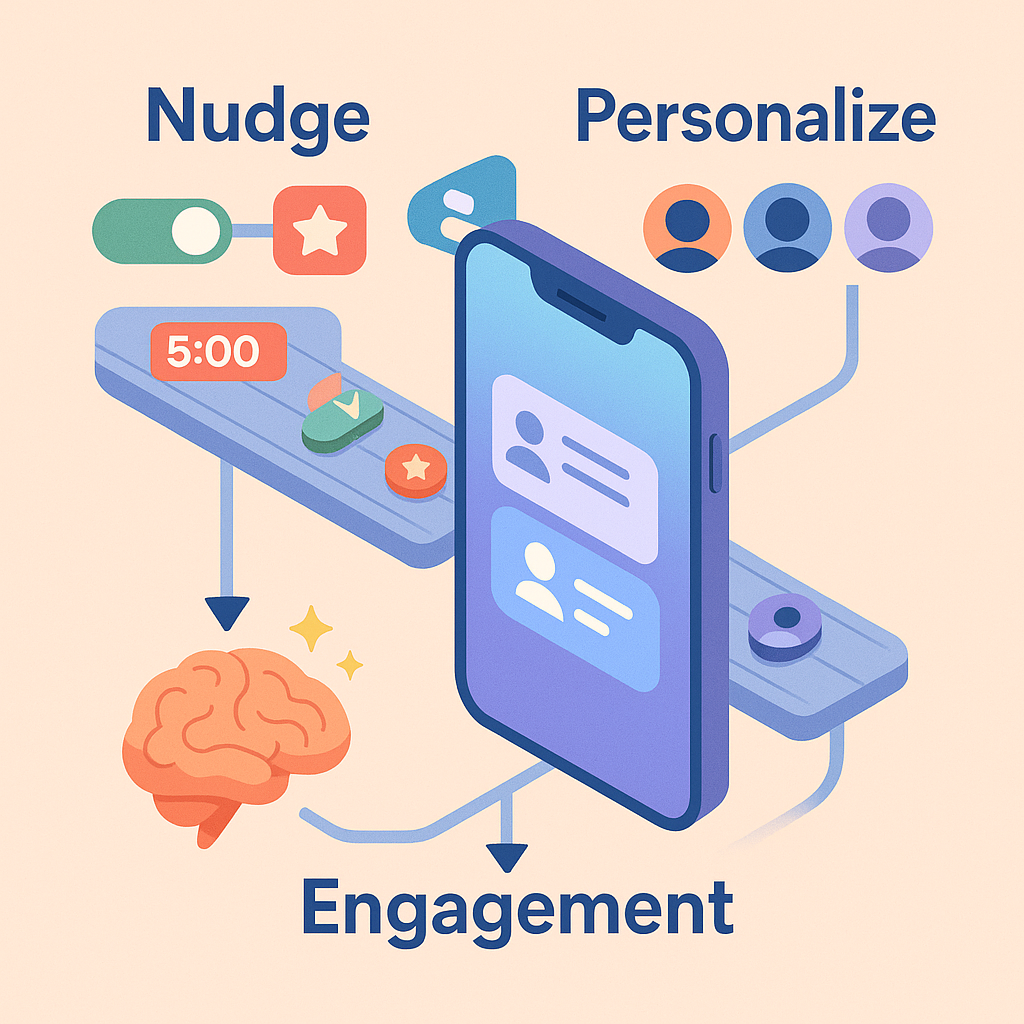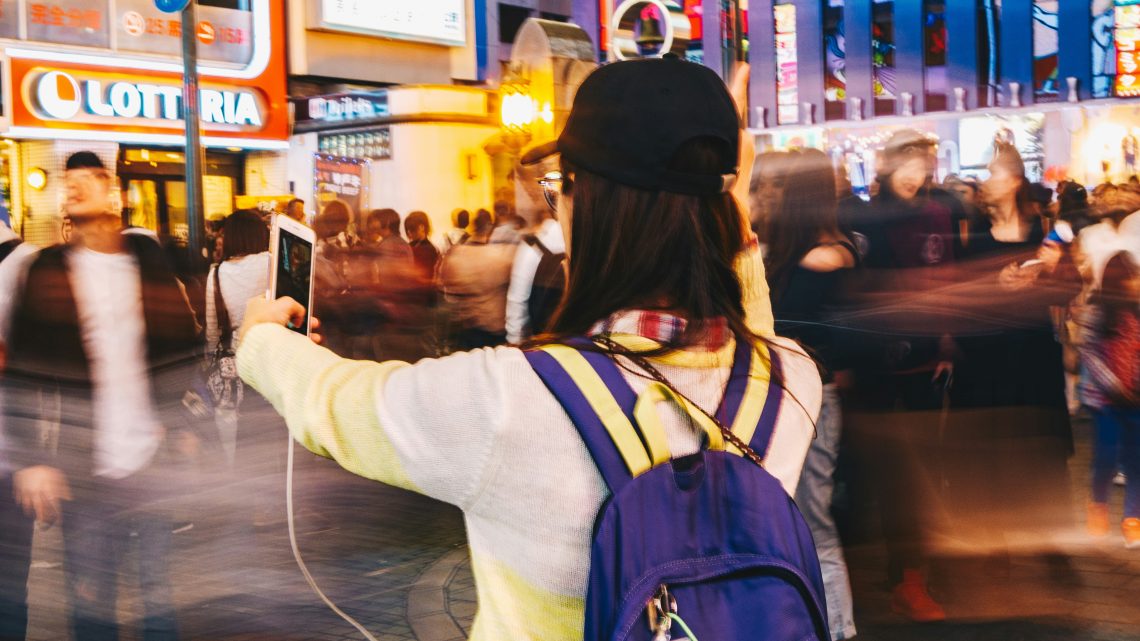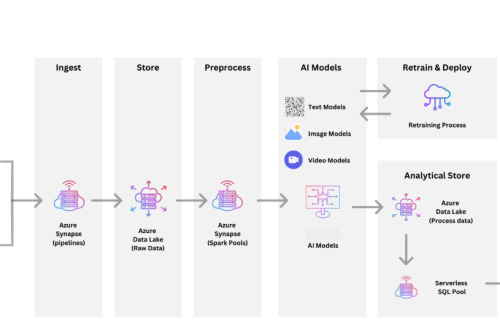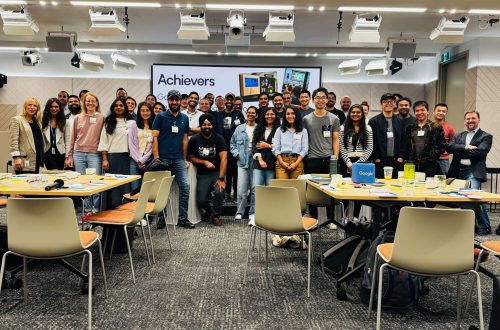Ever wondered why a two-minute glance at your phone morphs into a 20-minute scroll spiral? It isn’t just flashy visuals or clever copywriting – it’s behavioral economics working hand in glove with machine-learning personalization. From the moment you wake up and swipe away your alarm, dozens of tiny design decisions are nudging you toward that next tap, swipe, or “just one more” video.
Nudge theory supplies the psychological levers: defaults, social proof, loss aversion. Personalization supplies the data-driven muscle, tailoring each lever to your unique habits in real time. Together they form the invisible operating system of modern apps – one calibrated to maximize engagement, retention, and, yes, revenue.
In this post we’ll unpack how those forces combine to keep you (and your dopamine receptors) reliably engaged, where the ethical fault lines lie, and how product teams can harness the same mechanics to build experiences that are sticky and responsible.
1. Nudge Theory in a Nutshell
Coined by behavioral economists Richard Thaler and Cass Sunstein, nudge theory says you can steer people toward a choice simply by tweaking the “choice architecture” around it – without banning alternatives or changing financial incentives. Default-on settings, timely reminders, and one-click pathways all count as nudges because they exploit our cognitive shortcuts (loss aversion, present bias, social proof) to shift behavior at almost zero friction.
2. When Nudges Meet Personalization
Modern apps super-charge those subtle pushes by personalizing them with real-time data:
| Personalization Layer | How the Nudge Evolves | Example Trigger |
|---|---|---|
| Demographic / Location | Surface time-sensitive defaults (e.g., local deals expire tonight) | Food-delivery “Lightning Specials” at dinner hour |
| Behavioral Patterns | Adjust frequency & tone based on past responses | Calm app sends a softer prompt when you ignore two straight notifications |
| Micro-Moments | Deliver a “just-missed” social proof nudge seconds after you close the app | Instagram’s “3 new likes since you left” banner |
A recent peer-reviewed study found that “regret” and “herd” nudges, when individualized, boosted take-up of a product-customization feature by 15 % – without any price change.
3. Inside the Hook: Variable Rewards & Micro-Commitments

Nir Eyal’s Hook Model (Trigger → Action → Variable Reward → Investment) remains the blueprint for sticky design: give users a small win they can’t quite predict, then ask for a tiny investment that makes the next visit feel inevitable.
- Infinite scroll & auto-play keep the reward stream uncertain, spiking dopamine with each thumb-flick.
- Streak badges in Duolingo or Snapchat convert sunk-cost bias into daily engagement.
- Netflix’s Top Picks row is built on collaborative-filtering models that learn what “surprise hit” you’ll finish – and queues it up before you can decide otherwise.
4. Are We Still in Control?
Regulators are starting to wonder. The EU’s 2025 digital-compliance push (from the Digital Services Act to the upcoming Data Act) explicitly flags “addictive design” and calls for age-appropriate defaults, frictionless opt-outs, and auditability of recommender systems.
Meanwhile, ethicists debate whether personal nudging crosses a line into manipulation – or whether it’s just a smarter way to help people do what they say they want (exercise more, save money, wash hands). Recent health-tech pilots that combine AI with nudges boosted hygiene-compliance rates by up to 30 %, hinting at a “nudge for good” future.
5. Building Engagement Responsibly
If you’re a product leader, here’s a four-point checklist to keep your nudges useful – not predatory:
- Outcome Honesty: Declare the behavioral goal up front (e.g., “We send streak alerts to maintain learning momentum”).
- User Agency Controls: Offer dynamic snooze, disable, or digest options – burying settings two menus deep is the opposite of a nudge.
- Data-Minimal Personalization: Use the smallest feature set you need; avoid “creepy accuracy” that wakes the privacy watchdogs.
- Well-Being KPIs: Track session quality (tasks completed, satisfaction scores) alongside raw time-in-app. If deeper engagement correlates with lower sentiment, your nudge is broken.
Nudges turn the gentle art of suggestion into product rocket fuel; personalization points that rocket directly at each user’s habits, hopes, and blind spots. Done right, the combo can help people meditate, learn languages, or manage chronic disease. Done wrong, it can hijack attention for profit. The next generation of standout apps will do more than maximize “time on device” they’ll master the ethics of the nudge and give users compelling reasons to come back because they want to, not because they can’t look away.





